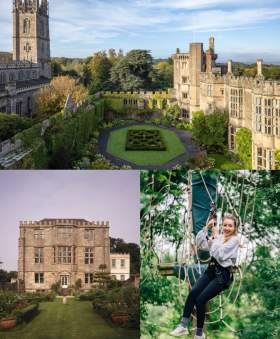Have you ever wondered about the origins of those five huge, grey stone buildings on Ashley Down Road? Now part of City of Bristol College (plus some modernised apartments), their history lies in the incredible story of Bristol pioneer, George Müller.
Find out who Müller was and how he helped the children of Bristol in this article by the George Müller Museum.
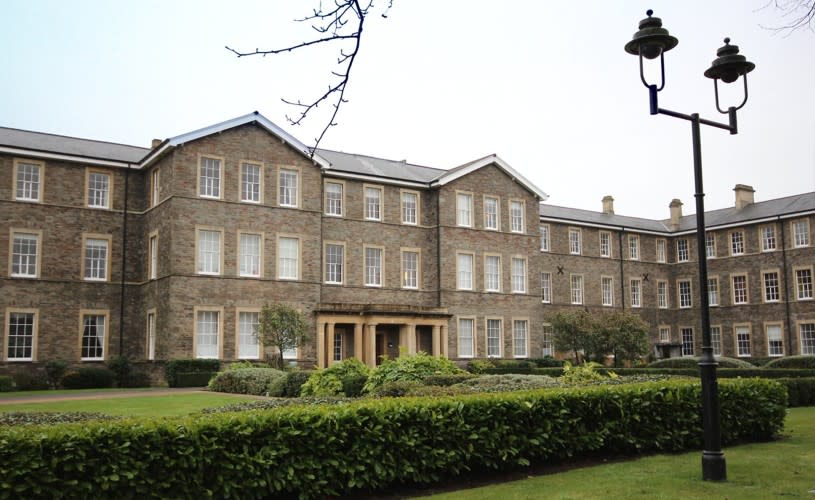
Image - The former Orphan Homes in Ashley Down
Who was George Müller?
George Müller was born in Kroppenstadt in Prussia in 1805. Sadly, his mother died when he was just 14 years old. A regular drinker and gambler at the local inns, George had already built up considerable debts and was imprisoned at the age of 16. After several weeks, his widowed father bailed him out and devised a plan that he hoped would see George back on the straight and narrow. He sent George to university at Halle to study to become a Lutheran priest.
While there, George had a religious conversion experience and became a Christian. After graduation he came to England but fell seriously ill. During his recovery in Teignmouth, Devon, he became the Pastor of Shaldon Chapel and married Mary Groves. Together they made a decision which was to set the pattern for the rest of their lives. They gave up the regular salary and decided to rely on prayer and spontaneous gifts for their needs.

Image - George Müller and his wife Mary Groves
In 1832 George and his friend, Henry Craik, moved to Bristol to lead the congregations at several Brethren chapels including Bethesda Chapel on Great George Street (eventually destroyed during a bombing raid in 1943). In 1832, the streets of Bristol were dirty – poverty and sickness were rife, and many orphaned children lived as ‘street urchins’ or in workhouses. George and Mary wanted to help.
Opening the orphan homes in Bristol
George decided to open an orphan home for two main reasons. He wanted to provide a home and food for these poor children who had no one to take care of them. And he was a man of great faith and wanted everyone to see that the God he believed in is real and answers prayer – and that God would show this by providing what the orphans needed.
He announced his plans and, in 1836, rented 6 Wilson Street in St Paul’s for the purpose of taking in 30 orphan girls. A year later Queen Victoria came to the throne. This was a period of great progress in the city with the first steam train travelling on IKB’s Great Western Railway from London to Bristol in 1841 and the SS Great Britain crossing the Atlantic in 14 days in 1845.
By 1843, George had rented three further houses in Wilson Street and was caring for 120 orphan girls and boys. In 1845, the neighbours complained about the noise of the orphans playing in the street and the smell from the blocked sewers. George started praying and announced his plans to open a new, larger orphan home, outside the city centre, where the children could have space to play and fresh air to breathe.
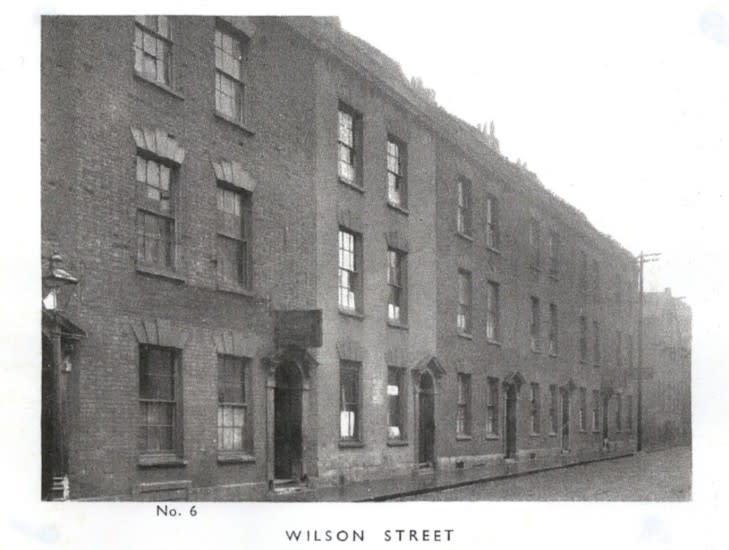
Image - Orphan Homes on Wilson Street
Moving the Orphan Homes to Ashley Down
By February 1846, George had received the £10,000 required for the new Orphan Home. On 3 February George found some land on Ashley Down. After leaving him a message on 4 February, George met with the landowner the following day who confessed that he:
awoke at three o’clock this morning and could not sleep again till five. While he was thus lying awake, his mind was all the time occupied about the piece of land…and he determined, that if I should apply for it, he would not only let me have it, but for 120l. per acre, instead of 200l., the price which he had previously asked for it. How good is the Lord! The agreement was made this morning, and I purchased a field of nearly seven acres, at 120l. per acre.
The first Orphan Home on Ashley Down opened in 1849 and housed 300 children. A second orphan home ‘No. 2 House’ opened in 1857, for 400 children. In 1858 George bought some more land on Ashley Down. In 1862 he opened ‘No 3 House’ for 450 children. In 1865, George had received enough money to buy more land. ‘No. 4 House’ opened in 1868 and ‘No. 5 House’ in 1870. Both houses accommodated 450 orphans.
Ashley Down was now home to 2,050 orphaned children plus staff. George never did any fund-raising, never asked for any money but prayed every day for the resources needed to care for the orphans. He received answers to his prayers through the generosity of thousands of gifts given or sent to him by the people of Bristol and, as the work grew, from all over the world. In his lifetime, he received over £100m in today’s money and cared for over 10,000 orphans in his lifetime.
Life at the Orphan Homes
George Müller was pioneering in his free provision for poor orphans (both Charles Dickens and Dr Barnardo visited his Orphan Homes) and especially in his belief that they should be given a good education. All the Ashley Down Orphan Homes had classrooms for the children to learn Maths, English, Geography, History, Music, PE, practical tasks and, of course, religious education.
George employed teachers and school inspectors to make sure the education was of a high standard. The education the orphans received was life changing. They entered the homes destitute and left with the skills to go into service (girls) or begin an apprenticeship (boys). George was criticised for raising these children above their station and for robbing the factories of their labour.
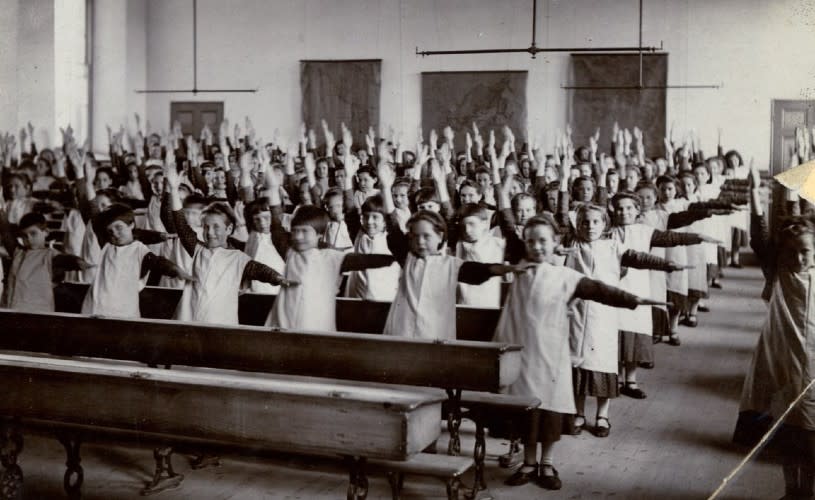
Image - Girls classroom at the Orphan Homes
George also provided excellent healthcare for the orphans, employing nurses and setting up infirmaries in each Orphan Home. He insisted on fresh air, exercise and a balanced diet for all the children – the mortality rate in the Homes was much lower than for children outside the orphanages.
Life inside the Homes was no doubt strict and organised, due to the number of children being cared for. There were chores to do, such as growing vegetables, laundry, cooking and cleaning. But there was also plenty of time for play and celebration. The orphans enjoyed two playtimes each day and three meals. They were taken on outings and special occasions were marked, including the famous annual picnic on Purdown to celebrate George Müller’s birthday. People in the streets around Ashley Down and surrounds would come out to watch the parade of orphans passing by.
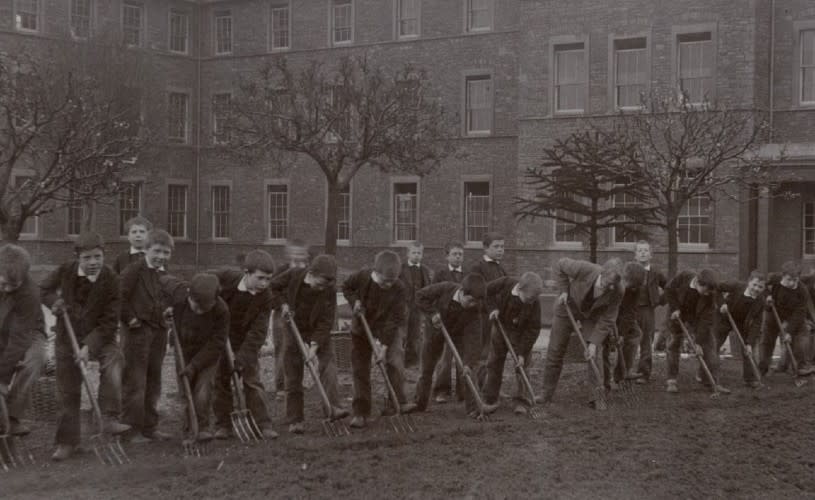
Image - Children gardening at the Orphan Home
The legacy of George Müller
In 1875, at the age of 70, George set off on the first of many journeys all over the world. He travelled 200,000 miles in 17 years – telling the story of the miracle that had happened in Bristol.
George Müller died in 1898 at 92 years of age. Bristol came to a standstill for his funeral – shops and factories closed so that people could pay their respects. He is buried in Arnos Vale Cemetery.

Image - George Müller's funeral procession through Bristol city centre
The work continued after George Müller’s death. Over 17,000 orphans were cared for at the Ashley Down orphanages until the 1950s. As the care system in England changed, the Orphan Homes were closed and the work of the Müllers charity changed. It is still active today sending over £1m per year to partners working in Bristol and overseas with vulnerable children and families.
The new George Müller Museum is located in Home No 2 (now Loft House) on College Road, off Ashley Down Road. It contains a fascinating collection of over 17,000 orphan records and a range of fascinating artefacts from the Orphan Homes. There are some great interactive exhibits for all ages and original orphan uniforms to try on.
The museum is normally open Monday to Friday 10am-4pm and for special family fun events during school holidays. While they’re closed due to Covid-19 restrictions right now, they are running online lessons about George Müller for schools. For details, email museum@mullers.org or call 0117 9245001.
You might also like:
